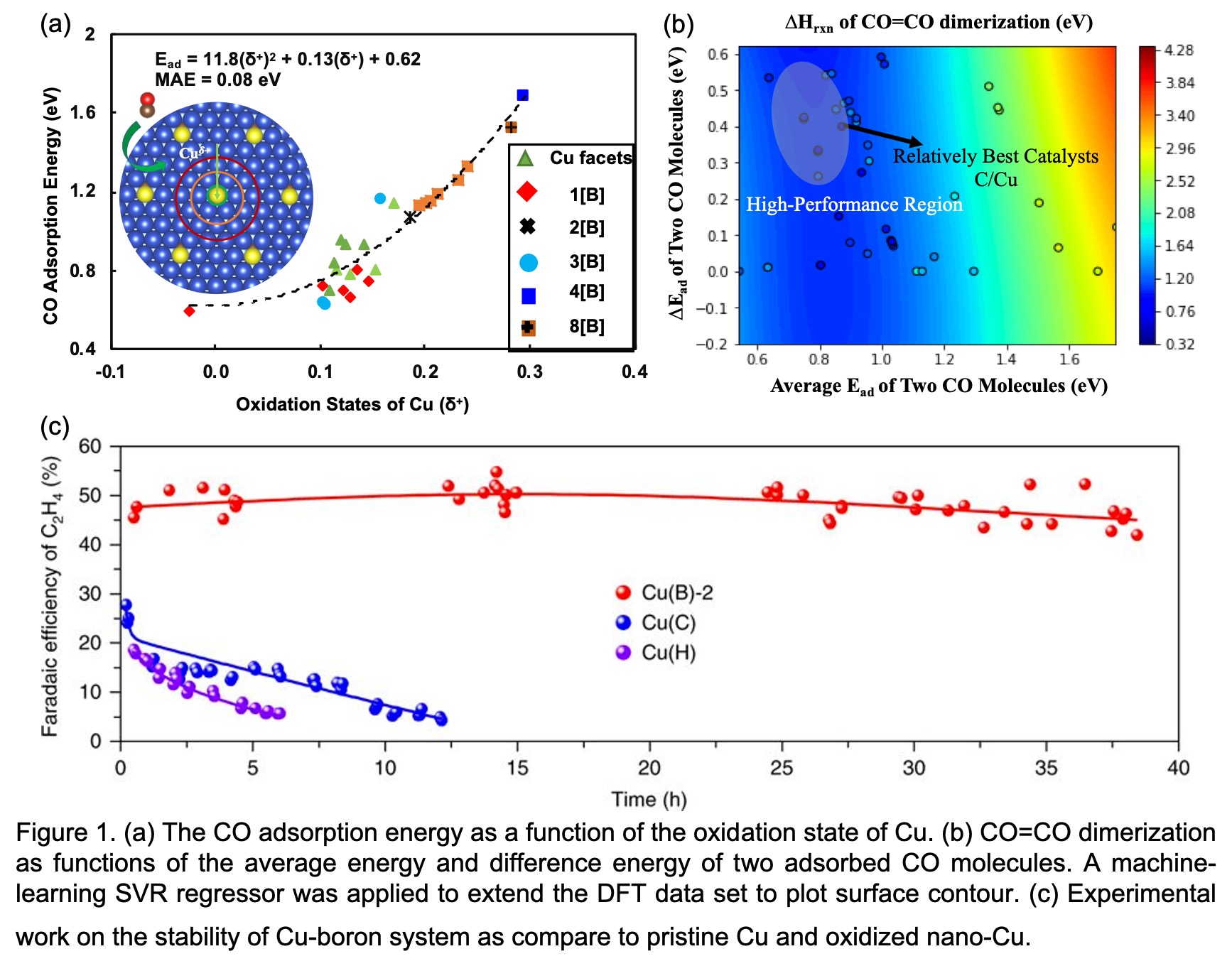The electrochemical reduction of CO
2 (CO
2RR) over Cu to a single class of target hydrocarbons â ethylene represents one prominent example of intense recent interest â is attracting considerable attention. It provides an avenue to the synthesis of high energy density and high economic value feedstocks and fuels using renewable electricity. However, before CO
2RR can be widely applied, at least two significant issues need to be addressed: (1) Previous research has shown that modified copper is especially selective in CO
2RR; however, diverse C1 and C2 species are generated simultaneously. It is of interest to enhance the selectivity to a single high-value hydrocarbon product at high activity; (2) High Faradaic efficiencies for C2 products have been achieved by inducing surface Cu
δ+ sites in Cu via oxygen species. Since such Cu
δ+ sites are expected to be readily reduced to Cu
0 under CO
2RR, it is of interest to increase the stability of the Cu
δ+ sites in Cu.
We took the view that the electronegativity of new dopants could increase Cuδ+ sites and offer a subsurface doping strategy that keeps the Cuδ+ sites stable under the reducing potentials used in CO2RR. In DFT calculations (Figure 1), we found that boron and carbon elements under negative applied potential can be stable at the subsurface of a Cu(111) slab, and that they greatly alter the Cu oxidation state to be positive, and as a consequence enhance the selectivity of ethylene products from CO2RR. Our corresponding experiments also achieve a high Faradaic efficiency for ethylene of ~52% for boron-doped Cu and ~78% for carbon-doped Cu. Importantly, boron-doped and carbon-doped copper showed ~40 h and ~170 h stability for CO2RR to ethylene. This theoretical and experimental combined work indicates a role for subsurface chemistry in enhancing the selectivity and stability of the Cu based CO2RR system.


